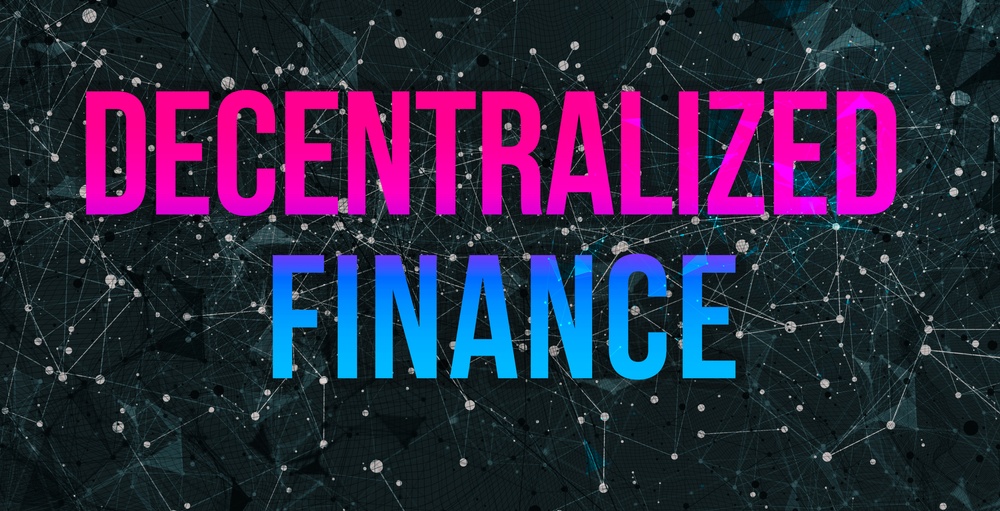Top Trends to Define the Crypto Industry in The Second Half Of 2020

It is hard to believe that we just passed the halfway point of the year, considering the ups and downs of 2020 so far. No one could have predicted at the beginning of the year that a pandemic will drastically alter the world economy and cause a global market crash. While it has been a bumpy year for a majority, the events, trailing the outbreak of the coronavirus pandemic, present new types of opportunities, especially for the blockchain and crypto industry. In this piece, I will explore some of the trends to look out for in the latter part of 2020.
How Far Have We Come?

The year began with a promising outlook on Bitcoin’s strong correlation with gold following political tensions between the US and Iran. In an article titled: The US-Iran Conflict Is Another Template Proving the Efficacy of Bitcoin as A Safe Haven, I explored the similarities in the price patterns of gold and Bitcoin and concluded that the latter is valid as a safe-haven. I wrote:
“…the price of bitcoin reached new highs on January 7, as the tension between the two nations heightened. Amazingly, the price dipped just as it was noted in the gold market. Without any doubt, there is a strong correlation between the reactions of both markets to the events unraveling in the geopolitical scene. And there is every reason to believe that bitcoin might have taken its place as one of the reliable assets, even as the stock market in the United States experienced a downswing resulting from the uncertainties trailing war provoking actions on the part of both countries. Another evidence of bitcoin’s burgeoning status as a valid store of value is found in a chart detailing the one-year correlation between gold and bitcoin. According to Coinmetric, both markets have indicated increasingly strong correlations for some months now. As such, it comes as no surprise that Iran has opted to include components of both assets in its grand financial innovation, which it hopes would help fight-off inflation and economic embargoes.”
Who would have thought that just barely two months after writing the piece, the store of value capacity popularly attributed to bitcoin will come under intense scrutiny? Amid the onslaught that trailed the first wave of the coronavirus pandemic, the prices of cryptocurrencies crashed along with other established assets. There were no safe havens as financial uncertainties spurred investors to liquidate their investments. Ever since these events, the crypto market has recovered remarkably, thanks to the influx of institutional investors and an increase in the market visibility of DeFi tokens.
In the midst of all these, three crypto networks, including Bitcoin, halved their block rewards and, in the process, altered mining trends. For the most part, crypto media platforms explored the possible alterations these halvings could have on the profitability of crypto mining. As such, experts expected miners with old mining rigs to opt for profitable altcoins and, in turn, cause a significant drop in the hash rates of affected coins.
Rashit Makhat, the co-founder of Powerry, recently explained that the combined effects of bitcoin halving and Ethereum 2.0 are fueling the evolution of the crypto mining market. He stated:

Rashit Makhat, the co-founder of Powerry
“As a result of the Bitcoin block halving that took place on May 11, 2020, the block reward […] was halved. In order to stay ahead on the market, miners must promptly update their equipment fleet. The most popular machines until 2020 – S9 ceased to be profitable for miners from almost any region, including regions with low energy costs, such as China.”
While the high cost of mining was a recurring conversation, it, however, did not dampen expectations as regards price movements before and after the bitcoin halving. As expected, crazy price projections lured new investors in large numbers and prompted existing ones to hold on to their stash. Even though it took a while before bitcoin began to meet price expectations, the resolve of crypto participants stood firm. But the question is: Have these developments and events set the tone for the closing months of 2020?
Trend Projections for The Coming Months
A Bitcoin Bull Run May Be on The Horizon
Indicators show that investors are anticipating a bull run following crypto’s recent upsurge. We have begun to see trends last recorded in the bull market of 2017. For instance, the number of daily active bitcoin addresses is slowly approaching 2017 levels. This development was made known by Brock Connelly, the CEO of RoundBlock Capital in a tweet:

Brock Connelly, the CEO of RoundBlock Capital
“Has anyone noticed, daily active addresses (Bitcoin) is back above June 2019 levels, and approaching high of 1.29mm in December 2017. BTC market feels much different now.”
Recent research noted that 93.76% of all Bitcoin addresses are generating profits. As such, it only made sense for investors to hodl. The researchers explained:
“The Bitcoin network has a total of 702.11 million addresses, from which 30.99 million currently have a balance in BTC. At the current price of $11,758.8, 93.76% of the addresses with a balance are currently profiting from their BTC positions.”
There is no doubt that the digital asset market has attracted unprecedented attention, as shown by the rate at which Twitter users mentioned bitcoin in the last couple of weeks. More often than not, the price of bitcoin tends to spike whenever the popularity of the crypto asset increases on social and media platforms. Joshua Frank, co-founder and CEO of The Tie, reiterated this sentiment when he told Cointelegraph:

Joshua Frank, co-founder and CEO of The Tie
“Bitcoin hit its highest daily tweet volume level since June 26th 2019 in the wake of the Twitter scam on July 16th. While it isn’t clear that the run-up had any correlation to the scam, we have seen in the past that, all else equal, the more users talking about Bitcoin the better the asset performs.”
Another interesting revelation is how the web traffic of crypto exchanges globally surged by 13% in July. According to a recent report, there was a significant increase in the number of people visiting established crypto exchange websites last month. This revelation shows why the number of active Bitcoin addresses has exploded. The report reads:
“While the average stands at 13%, some crypto exchanges have recorded a more notable monthly increase, with traffic surging over 60%, as was the case with YoBit.net and KuCoin. Binance, the world’s largest crypto exchange, reportedly saw 24.9 million visits in July, with traffic surging nearly 10%. Coinbase, the largest crypto exchange and wallet service in the United States, recorded 22.5 million visits during that month, with traffic seeing an 18% increase.”
Altcoin and DeFi Will Continue to Impress

Although bitcoin remains the dominant force of the crypto market, it is unwise to ignore the rise of altcoins, particularly stablecoins and DeFi tokens. Already, several crypto assets have outperformed bitcoin this year. Due to the increased market visibility of altcoins, Bitcoin’s dominance in the crypto market has shrunk lately. Therefore, it comes as no surprise that analysts have begun to fixate on this trend. According to John Todaro, director of institutional research at TradeBlock, the surge in the circulating supply of stablecoins is reflective of how investors and users are becoming attuned to the benefits of crypto financial infrastructures. He stated:
“Stablecoin circulating supplies have increased substantially over the past 6 months, with Tether seeing around $10bn in deposits and USDC seeing over $1bn. This may seem small, but those deposits make Circle and Tether, to an extent, de facto banks with sizable customer deposits. $5–10 bn in customer deposits is equivalent to a small to midsize U.S. commercial bank.”
As for Denis Vinokourov, head of research at BeQuant, it is critical to pay attention to the market movement of Ethereum, which is currently capitalizing on the high demand for DeFi tokens. Vinokourov asserted:
“Particular attention ought to be paid to the evolution of Ethereum volatility profile which, despite coming off recent highs, remains elevated relative to Bitcoin. This suggests more potential volatility for the second-largest cryptocurrency.”
Inflation of Fiat Currencies and The Stock Market Bubble

One of the factors fueling crypto’s uptrend is the flaws of monetary policies introduced to reduce the impact of the coronavirus pandemic. Countries like the US have continued to pump capital into the stock market and financially support businesses in an attempt to prevent an economic collapse. Though some economists believe that these policies are essential, others are a bit skeptical about its long-term effects. Skeptics have stressed that these monetary policies could lead to hyperinflation. As a result, investors have suddenly opted for safe-haven assets like gold and Bitcoin.
Like hyperinflation, the stock market bubble is another major concern for investors. For a while now, the US stock market has consistently outperformed the country’s economy. Experts believe that this is a valid indicator that we are in a bubble. Welt market analyst Holger Zschaepitz recently highlighted this possibility when he tweeted:

Holger Zschaepitz
“Global stock mkts have hit another milestone. All stocks now worth more than 100% of global GDP for the 1st time since 2018, pointing to stretched valuations. For Warren Buffett, a Market Cap to GDP Ratio >100% means stocks in bubble territory.”
A closer analysis of this reveals that bitcoin is also at risk of experiencing a pullback. The digital asset has maintained a strong correlation with stocks since the year began, and pundits like Joseph Young fear that the crash of traditional assets might momentarily impact the price of bitcoin negatively. He wrote:
“There is no conclusive link between stocks and Bitcoin other than BTC has followed the trend of stocks in the past four months. Data from Skew shows that since early July, Bitcoin closely resembled the performance of the S&P 500. If stocks begin to drop as investors seek safety in bonds and treasuries fearing an overvalued market, it could negatively affect Bitcoin. The momentum of the stock market remains strong, and during a bullish trend, the market can remain overheated for prolonged periods.”
More Alterations in The Crypto Mining Economy

More reshuffling will likely occur in the crypto mining sector as the prices of crypto assets rise and fall. The primary motivation for miners is profits. Therefore, we will continue to see both massive and insignificant changes in mining trends. One of the lofty alterations expected is the reduction of China’s dominance in the crypto mining economy. Jameson Lopp noted this possibility in a recent blog post:

Jameson Lopp
“Over the very long term, I expect we will see semiconductor foundries outside of Asia begin producing more mining chips and countries with even cheaper power sources will continue to become more industrialized, thus providing more competition when miners are seeking out new locations to set up shop. China’s mining dominance is unlikely to last.”
Regardless of China’s current share of the crypto mining sector, Lopp believes it is almost impossible for states or individuals to attack established cryptocurrencies successfully. He added:
“It’s hard to imagine a scenario in which a state actor would be able to quickly and covertly seize enough hash power to perform an ongoing attack that lasts more than a few hours. A worst-case scenario in which state actors did seize all of the physical equipment could result in China only mining empty blocks and orphaning other blocks that did contain transactions, essentially halting all transaction confirmations on the network. Then it would become a game of either patiently waiting for them to give up or coordinating a code change that would make their hashing machines worthless.”
Apart from a wild swing in mining dominance, another factor that could change the crypto mining landscape is the anticipated Ethereum upgrade, which will activate the transition to the Proof of Stake consensus model. Ethereum miners will either opt for other altcoins or evolve into ETH stakers.
The Introduction of a Viable CBDC
Earlier this year, China announced plans to implement a blockchain-based centralized version of its local fiat. It is interesting to see how this lofty implementation unfolds and how it will change the way we view government-issued currencies. Besides, we should not forget that this is a carefully laid plan to take out the US dollars. Hence, it could also signify a critical shift in economic power. I expect a successful launch to motivate other countries to introduce similar projects.

